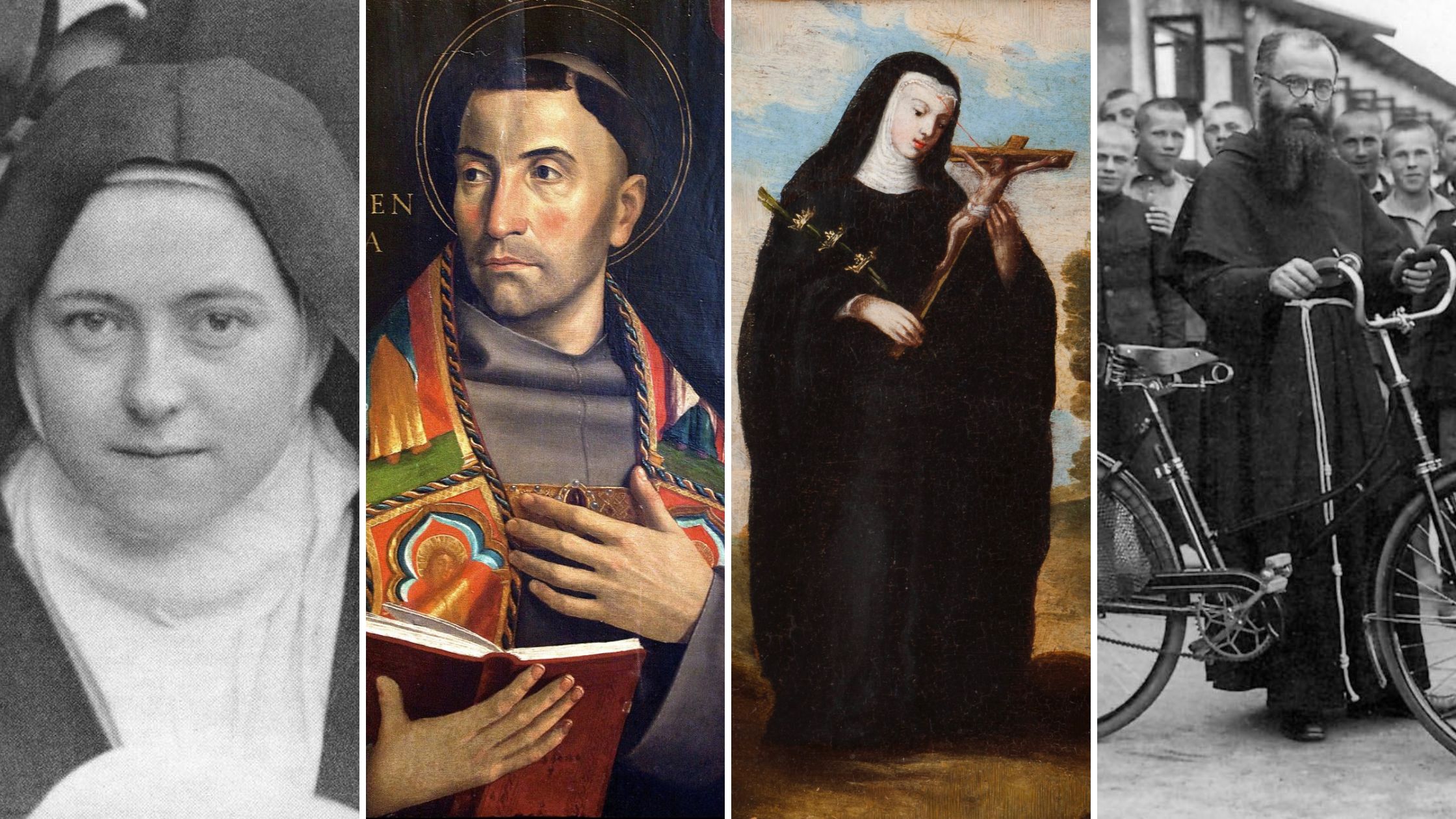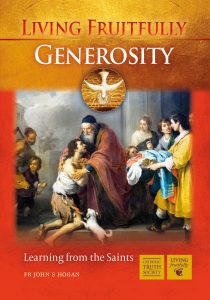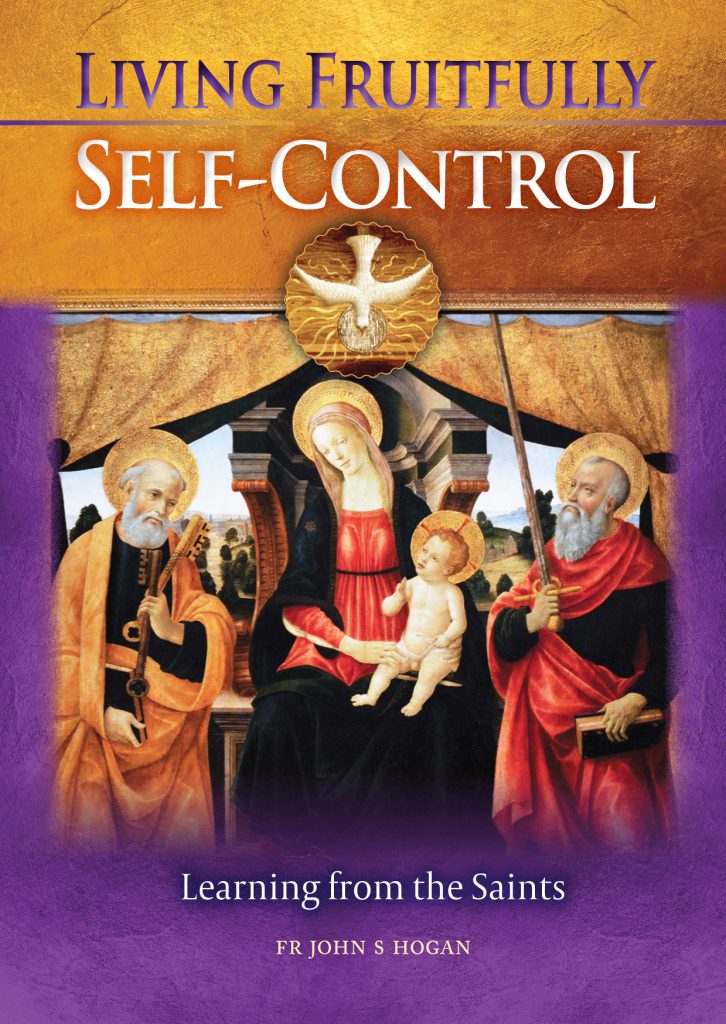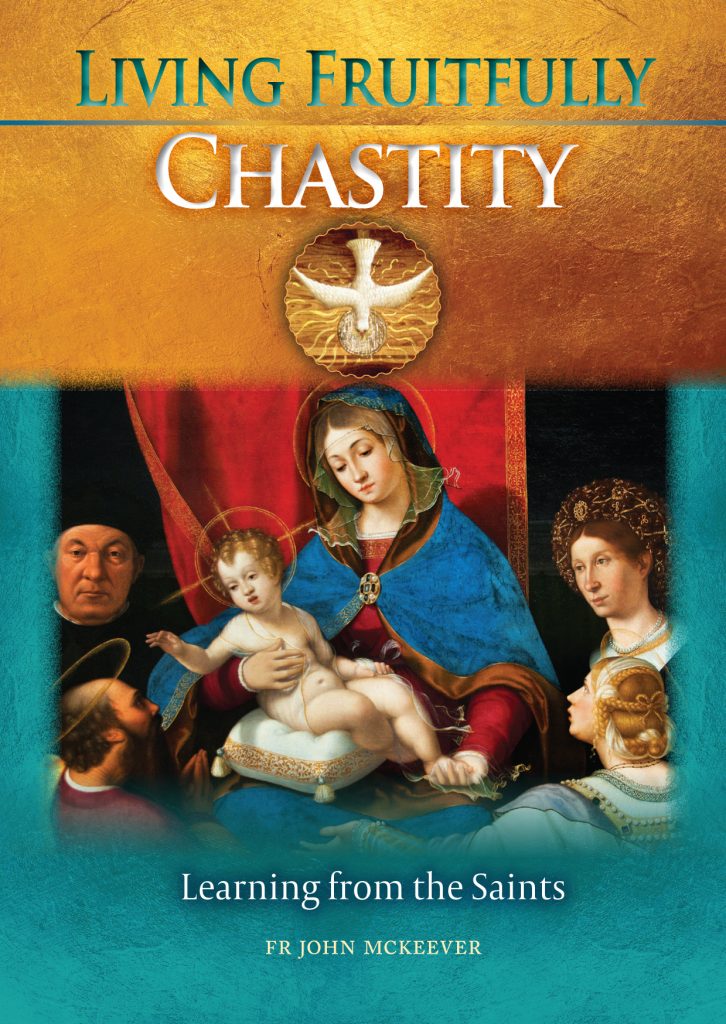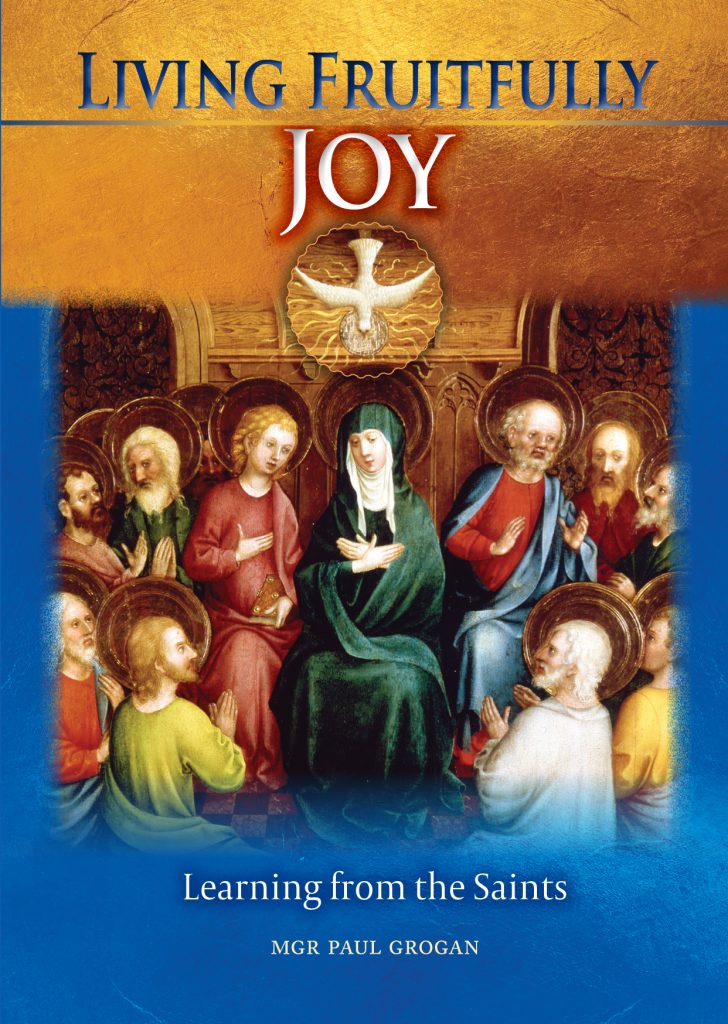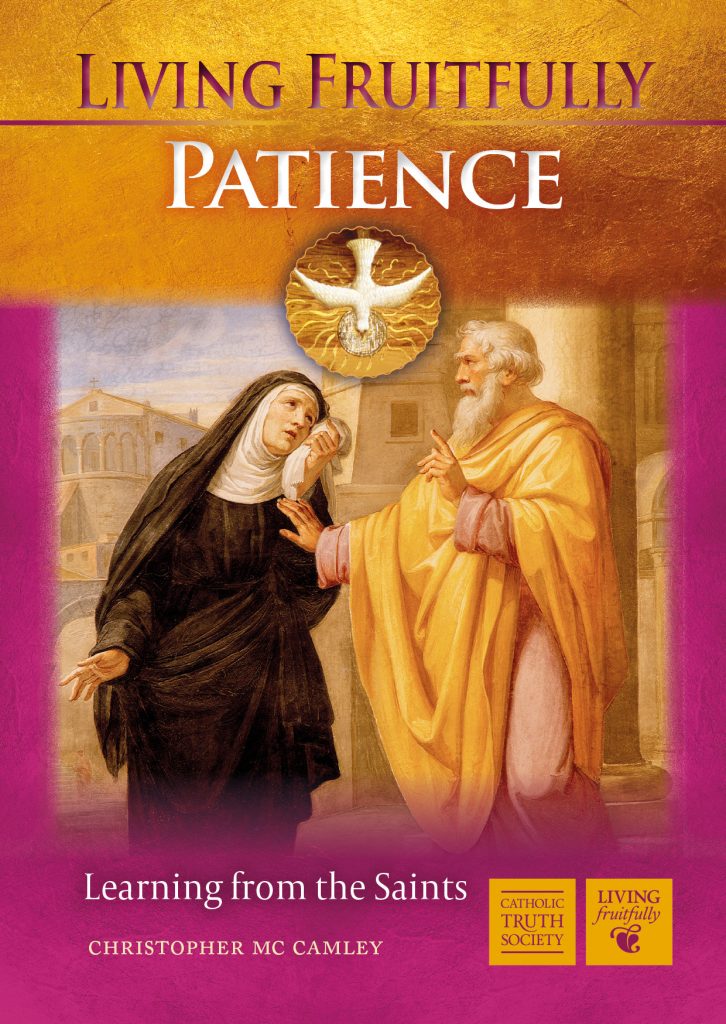In the Sacrament of Confirmation each one of us experienced a personal Pentecost, when the Holy Spirit descended on us and conferred upon us what the Church calls “the fruits of the Holy Spirit”. These are not just pious-sounding attributes of God, but rather, thanks to the effects of the Sacrament, real graces offered to us to be embraced and used in our daily lives to help us advance in holiness. The Second Vatican Council reminds us that we are all called to holiness; indeed, one of the main themes of that Council is the universal call to holiness – it is one of the aims of the reforms of the Council. Our life here on earth is one in which we are meant to grow in holiness, become saints and offer to the Church and the world an example of faithful Christian living.
This is the testimony of the saints who, though still struggling and suffering with their weaknesses and sins, lived their lives in Christ’s and were sustained by the fruits of the Spirit in their manner of life. While the gifts of the Spirit are given to individuals and may differ – some are called to be apostles, some to be teachers, for example – the fruits of the Spirit are to be given to all and can be lived by all regardless of their state in life and particular vocation. That includes all of us. It is God’s intention that you and I may act upon what the Spirit seeks to give us, so that we may be sustained and transformed; strong and holy; fit for mission and for the kingdom of heaven.
This blog explores just four of these saints and the power of the Holy Spirit in their lives.
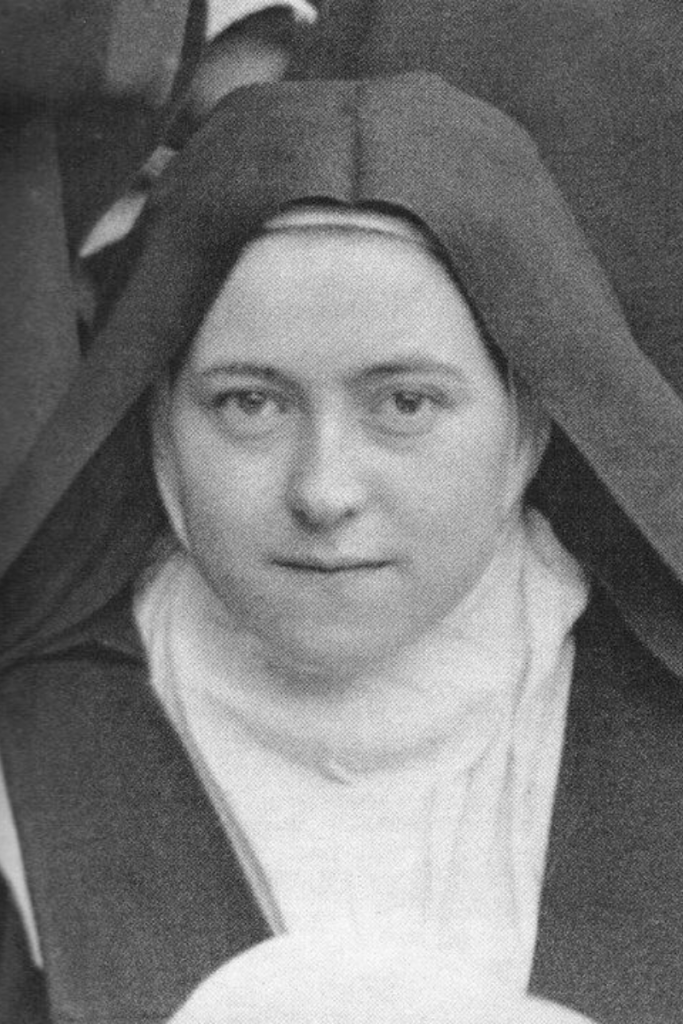 St Thérèse of Lisieux: Self-Control
St Thérèse of Lisieux: Self-Control
In the famous “Christmas grace” of St Thérèse of the Child Jesus we can see an interesting example of abandonment to the Holy Spirit. The pious image that has been created of the Little Flower hides, for many, the fact that she could be wilful. Reading her autobiography, Story of a Soul, one is struck by the strength of her character, and if she had not been ‘diverted’ by grace in her early years her life may well have turned out very differently. Thérèse had strong passions, and as a child she was sensitive in the extreme – the untimely death of her mother may have been a contributing factor here. Her childish passions lived long and conquered her in many ways, and as she grew older these passions became a trial for her father, St Louis, and her siblings, who, for charity’s sake, and perhaps even for a quiet life, tolerated them. Thérèse, if hurt, could collapse into a fit of uncontrollable tears, which meant that attitudes and behaviour had to be monitored in the Martin household to prevent another meltdown. But one Christmas all that would change.
It was Thérèse’s custom, on returning from Midnight Mass, to open her Christmas gifts, deposited, according to French custom, in shoes by the hearth, and then show them off with childish glee to the rest of the family. In this ritual the passions of her childishness would be on display for all to see. With Thérèse being fourteen on that Christmas of 1886, Louis hoped a change would finally come. When the family had come home from Mass and he thought Thérèse was out of earshot, he sighed, “Thank goodness that’s the last time we shall have this kind of thing!” But Thérèse was not out of earshot: she heard the remark. Her sister Céline, who was standing beside her, expected the dam to burst open and the tantrum to start; yet she witnessed something very different instead. Though Thérèse was stunned, something happened; self-control suddenly possessed her. She came back into the room as if she had heard nothing, jumped in childish glee and then, when it was time to retire, went to her bed. She gave no indication that she had heard her father’s remark, much less that she had been hurt by it. She called it her conversion, and the Thérèse who emerged from this incident was much more mature than ordinary fourteen-year-old girls. The Holy Spirit’s conferral of this fruit of self-control in that moment – a total gift as Thérèse acknowledged – advanced this future saint to an extraordinary degree that night.
 St Bonaventure: Joy
St Bonaventure: Joy
A great mystic of the Middle Ages was the renowned Franciscan theologian St Bonaventure (1221-1274). Like St Bernard a century before, St Bonaventure stressed the importance of the emotions in our search for God. He became master of the Franciscan school at Paris, was elected minister general of his order and then a cardinal. He played a key role in the 1274 Council of Lyons which sought to reunite the Churches of the East and the West. His theology was shot through with spiritual teaching. He famously described the “three ways” followed by those who seek God, ending with the third way: union with God, which leads to the “sweetness of love”. He was declared a Doctor of the Church. The following address to a “devout soul” is a good example of his approach:
Thus do thou distinguish the steps that lead to the way of union:
Let vigilance make thee attentive,
for the Bridegroom passeth swiftly;
let confidence make thee strong,
for he cometh without fail;
let desire enkindle thee,
for he is sweet;
let fervour raise thee up,
for he is sublime;
let delight in him give thee repose,
for he is beautiful;
let joy inebriate thee,
for he is the fullness of love;
let attachment unite thee to him,
for his love is full of power.
And mayest thou ever, O devout soul,
say to the Lord with all thy heart:
I seek thee,
I hope for thee,
I desire thee,
I raise myself up toward thee,
I lay hold on thee,
I exult in thee,
At last I cleave to thee.
St Bonaventure impresses upon us the need to be “attentive” to Jesus’s presence, by implication like the sensible virgins as they awaited the return of the bridegroom in Jesus’s parable (Mt 25:1-13). Intimacy with Jesus involves waiting in keen anticipation for his Second Coming. We can be “confident” in our relationship with Jesus because we know that he will not let us down. Through our intimacy with him we will experience the “fullness of love”.
To convey what this is like, St Bonaventure uses the image of marriage. The soul is seen as feminine and Jesus as the Bridegroom. We “get drunk on joy”. Here we think of Jesus’s revelation of his power at the wedding feast of Cana. He changed vast quantities of water into wine. At that moment he was looking forward to the Eucharist, the banquet of God’s love. He was also looking forward to the Marriage Feast in heaven when the divine Bridegroom will consummate his love with his Bride, the Church. This passage shows us how intense our love of Jesus can be. And it indicates that the more intense our love for him, the more exquisite will be our joy in “cleaving” to him.
 St Rita of Cascia: Patience
St Rita of Cascia: Patience
We call St Rita of Cascia (1381-1457) “saint of the impossible” because of the power of her prayers. She has a greater claim to be known as St Rita the Patient for she had much to endure. She personified the virtue of patience, and her life bore great fruit under the inspiration of the Holy Spirit.
Margherita Lotti (St Rita) was born in 1381 in Roccaporena in Umbria, Italy. She was married at age twelve to a nobleman named Paolo Mancini, the wedding having been arranged by her parents despite her repeated requests to be allowed to enter a religious community. Rita had her first child within the year. She spent eighteen years married to her abusive, violent and unfaithful husband. However, her patience, humility and love finally converted him near the end of his life. Her husband, Paolo was murdered by some of his many enemies, as part of a family feud.
Rita publicly pardoned her husband’s murderers at his funeral, but his brother, Bernardo, was said to have continued the feud and wanted to get Rita’s sons to seek revenge. Rita was afraid that her sons would lose their souls and tried to persuade them not to retaliate, but it was no good – they wouldn’t listen. Legend tells us that she prayed to God to take her sons before they could commit the mortal sin of murder. Both her sons died of dysentery within the year.
After their deaths, Rita applied to enter the monastery of Saint Mary Magdalene in Cascia but was turned away. Rita’s good character and piety were well known, but the nuns were afraid of being associated with the scandal of her husband’s violent death. Once more the patience which had marked her life as a wife and mother was required. She persisted in her cause and the monastery gave her a way to get in – she had to reconcile her family with her husband’s murderers first. She set about the task of establishing peace between the hostile factions of Cascia in the midst of bubonic plague, which ravaged Italy at the time.
She was able to resolve the conflicts between the families and, at the age of thirty-six, Rita was finally allowed to enter the religious community she had longed for since she was a child.
She remained at the monastery, living by the Augustinian Rule, until her death from tuberculosis on 22nd May, 1457.
 St Maximilian Kolbe – Generosity
St Maximilian Kolbe – Generosity
It is perhaps St Maximilian Kolbe who has inspired many modern men and women most by his selfless act of charity towards another man. St Maximilian, a Franciscan friar, was renowned in his lifetime for his work for Mary Immaculate. In his priestly life, he spared nothing to serve; immersed in the Spirit he had a generosity of self that defied human ability. It was his defiance of the Nazis during World War II that saw him imprisoned at the notorious concentration camp of Auschwitz. Even there his zeal could not be contained; his generous soul urged him to minister to his fellow prisoners. Though often weak and starving, he cared for them, fed them with his own rations and administered the sacraments. He made many sacrifices, took many risks within the strict and harsh regime of the camp, to bring the love of Christ to those despairing in that evil place.
But there was more to give, and Maximilian understood that. At the end of July 1941 when a prisoner escaped from the camp, ten others were chosen to die in retaliation. As one of those chosen pleaded with the deputy commander to let him live for the sake of his wife and children, Maximilian stepped forward to take his place. Confined in a bunker, a tomb for the living, Maximilian and the nine others slowly starved to death. He kept their spirits up, leading them in prayer and singing hymns, and as each died they died in his arms. After two weeks he was the only one still alive, and to finish him off the guards killed him by lethal injection; he voluntarily stretched out his arm to receive it.
